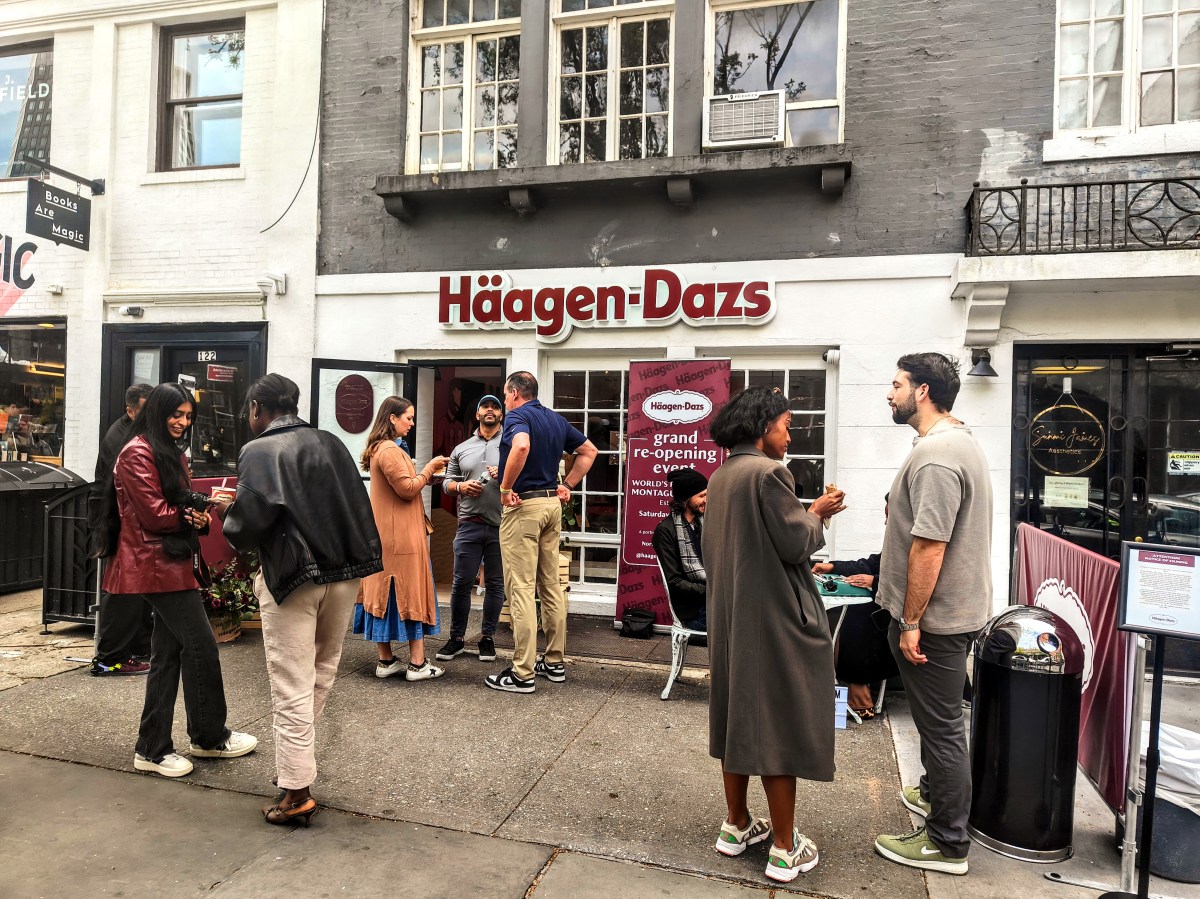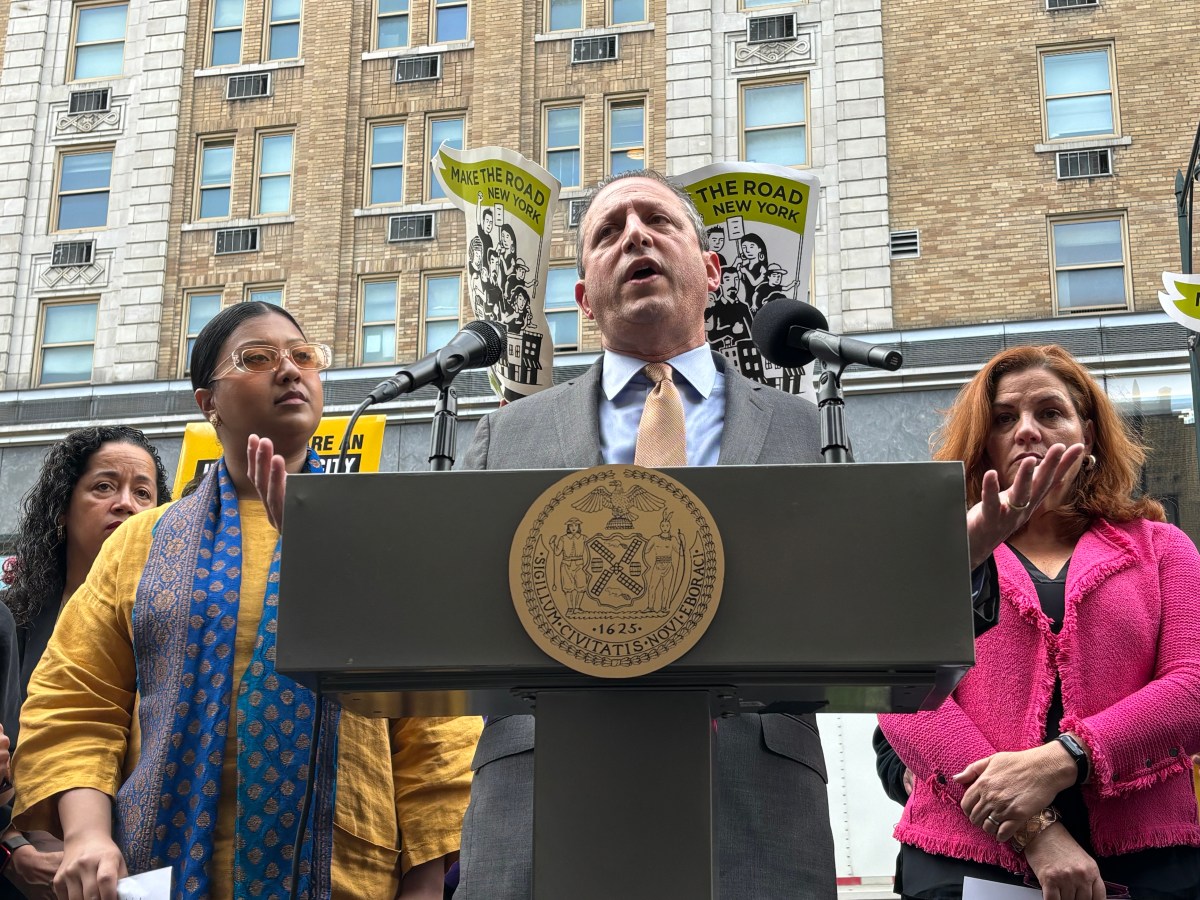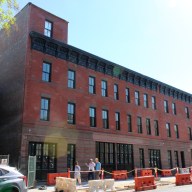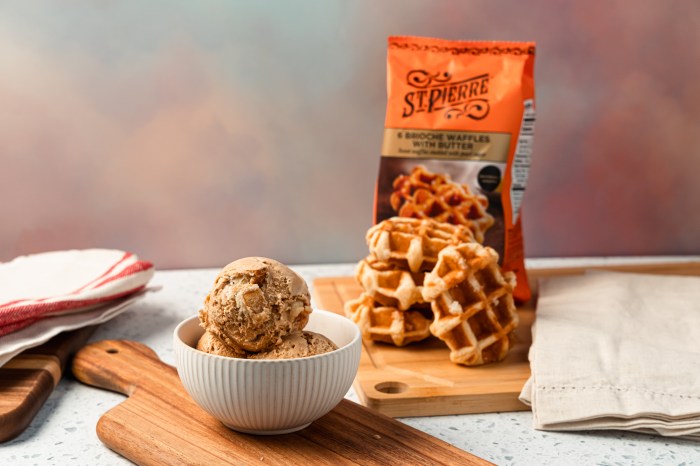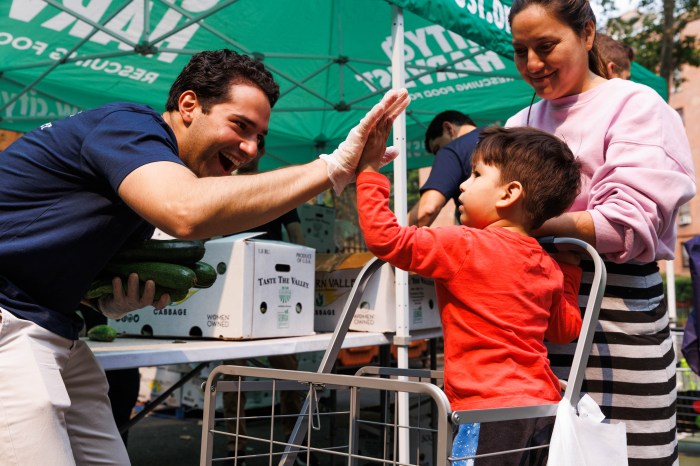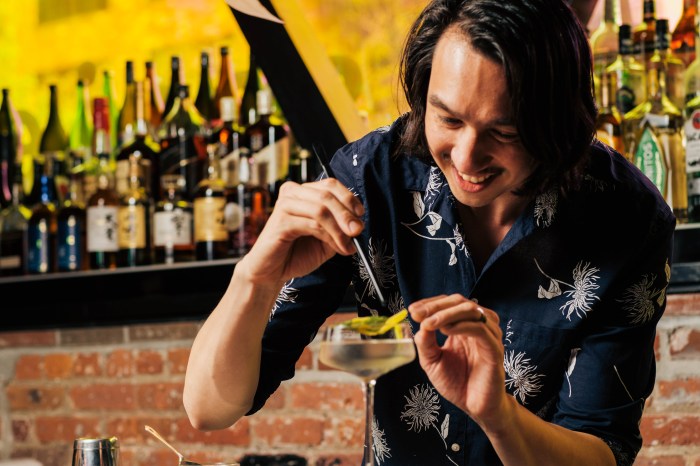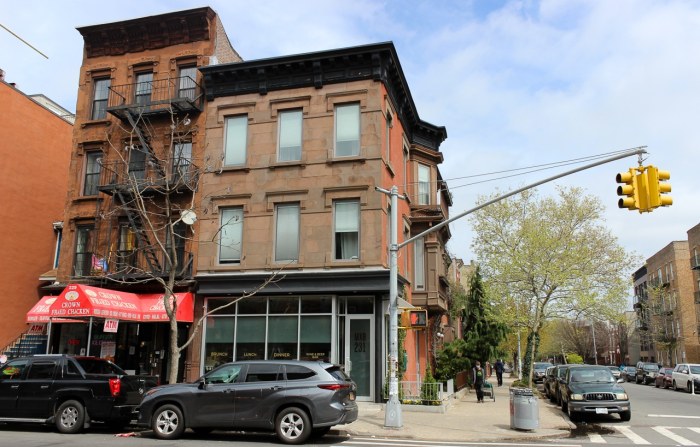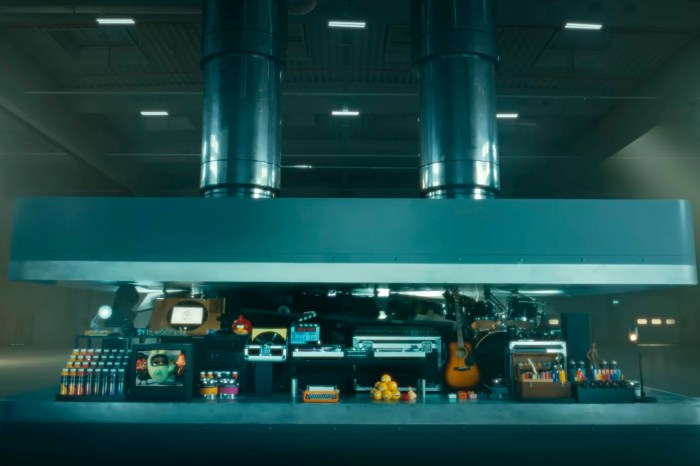Here’s the scoop!
Häagen-Dazs’ historic Brooklyn Heights location reopened on April 27 after renovations kept it shut for two months. The Montague Street ice cream shop — the brand’s first brick-and-mortar location — was redesigned with “modern romance” in mind, officials said, to commemorate the couple who founded the brand in the 1960s and their love of the city.
“I was very disappointed when I saw it had closed,” said Kate Hawkins, 63, who has lived in the area all her life. “I thought we were going to lose a lovely small piece of the neighborhood’s history. I was confused because every summer I see long waiting lines coming from here, and even in the winter, people come in and out all excited about their ice creams.”
At 120 Montague St., the burgundy awning is gone, replaced by a large Häagen-Dazs sign. Inside the store, there are two murals by Chase Design.
The first mural shows an abstraction of the founders holding each other, eating ice cream cones. The lovers are surrounded by the ingredients that made their ice cream famous — Madagascar vanilla flower, a strawberry and Colombian coffee.
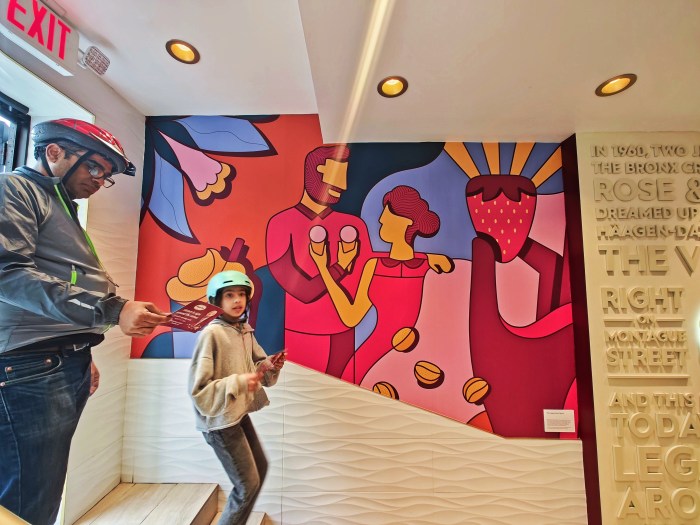
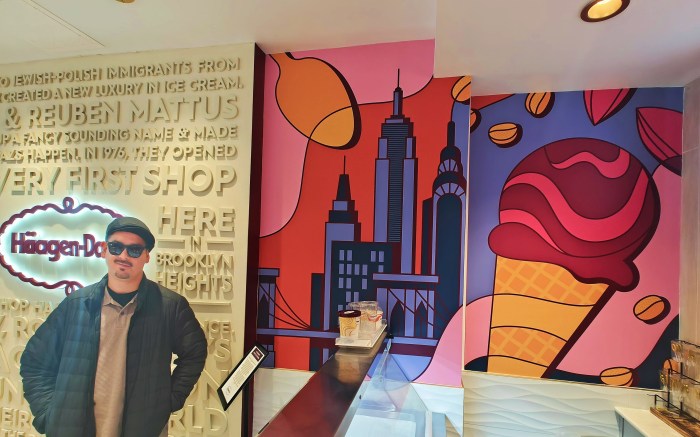
The second mural is of the Brooklyn Bridge, the Manhattan skyline, cocoa beans and an ice cream cone on the same size scale — all in bright colors.
“We wanted to make sure when you walk in, that you feel the history and you feel the story of where this shop started,” said Adam Hanson, president of Häagen-Dazs Shops.
Hanson said makeovers like Montague’s will trickle down to franchise stores everywhere.
In recent years, the brand has made changes to its packaging too. Currently, all non-plastic ice cream cups and lids are made from 100% compostable material. Their plastic cups are made from around 30% post-consumer recycled content and they plan to continue to work on more sustainable plastic alternatives in the near future. The spoons customers get at the shops with their ice cream cups will transition to compostable materials this year and the straws are made of compostable marine materials.
As part of the Brooklyn community, Häagen-Dazs has a long-time commitment with North Brooklyn Angels, a volunteer-powered non-profit that brings food to where it is needed through a mobile soup kitchen.
The globally known ice cream brand was founded in the Bronx around 1960 by Rose Mattus and her husband Reuben, two Polish-Jewish immigrant visionaries. They met in Poland, migrated to Brooklyn in 1921 and got married in 1936. Reuben started making ice cream when he was a kid, but after marrying Rose, who was avid at marketing their product, the business took off.
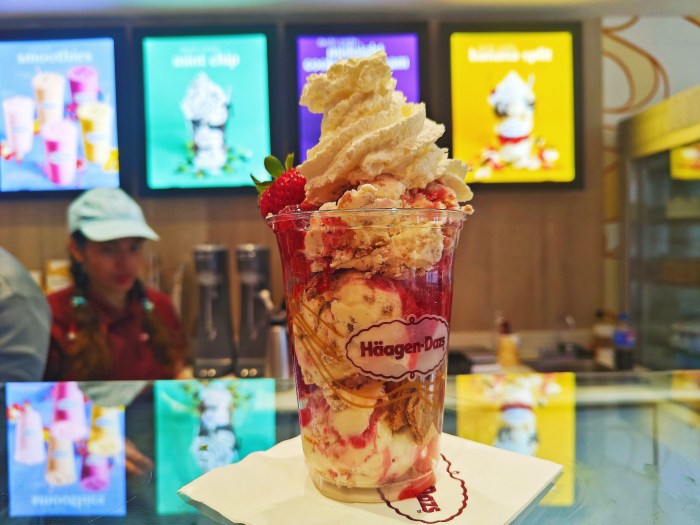
To stand out from competitors, the pair used fresh cream with high butterfat, real egg yolks, and high-quality ingredients for each flavor, such as Belgian chocolate, vanilla bean and coffee beans. Flavor was such a top priority that it took them six years to perfect their strawberry ice cream before launching it. Later, as an homage to its native city, the brand would come up with their now-famous New York Strawberry Cheesecake Dazzler, made with real strawberries and graham crackers. But the main element that made them very popular from the beginning — the density of their ice cream — is the result of an accidental malfunction of the air pump that would have made it puffier, according to Reuben’s autobiography.
The name Häagen-Dazs is just a made-up word. They are not Danish, or any other language, and when asked what it meant, Reuben would say simply, “The finest ice cream that money can buy.”
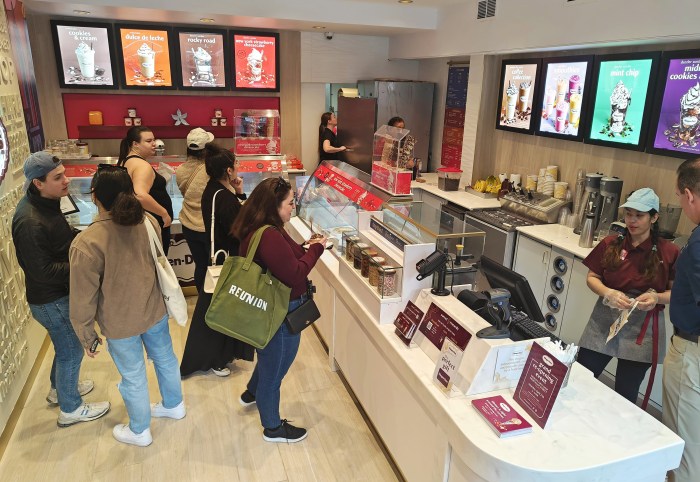
To jump-start their business, Reuben offered free ice cream samples to bodegas and grocery stores. Seeing how much love their products received, their daughter Doris opened the brand’s first brick-and-mortar shop in Brooklyn on Montague in 1976. By the 80s, the brand had become a nationwide franchise with sales of about $115 million annually.
In the last 48 years, the store has had four different looks.
“Walking out of here holding delicious ice cream, climbing out those little steps that feel so authentic to the architecture of the building and seeing those colors on the mural,” said Jenny Pfeiffer, 26, who attended the inauguration. “Just to find myself on a beautiful street, it’s amazing.”


